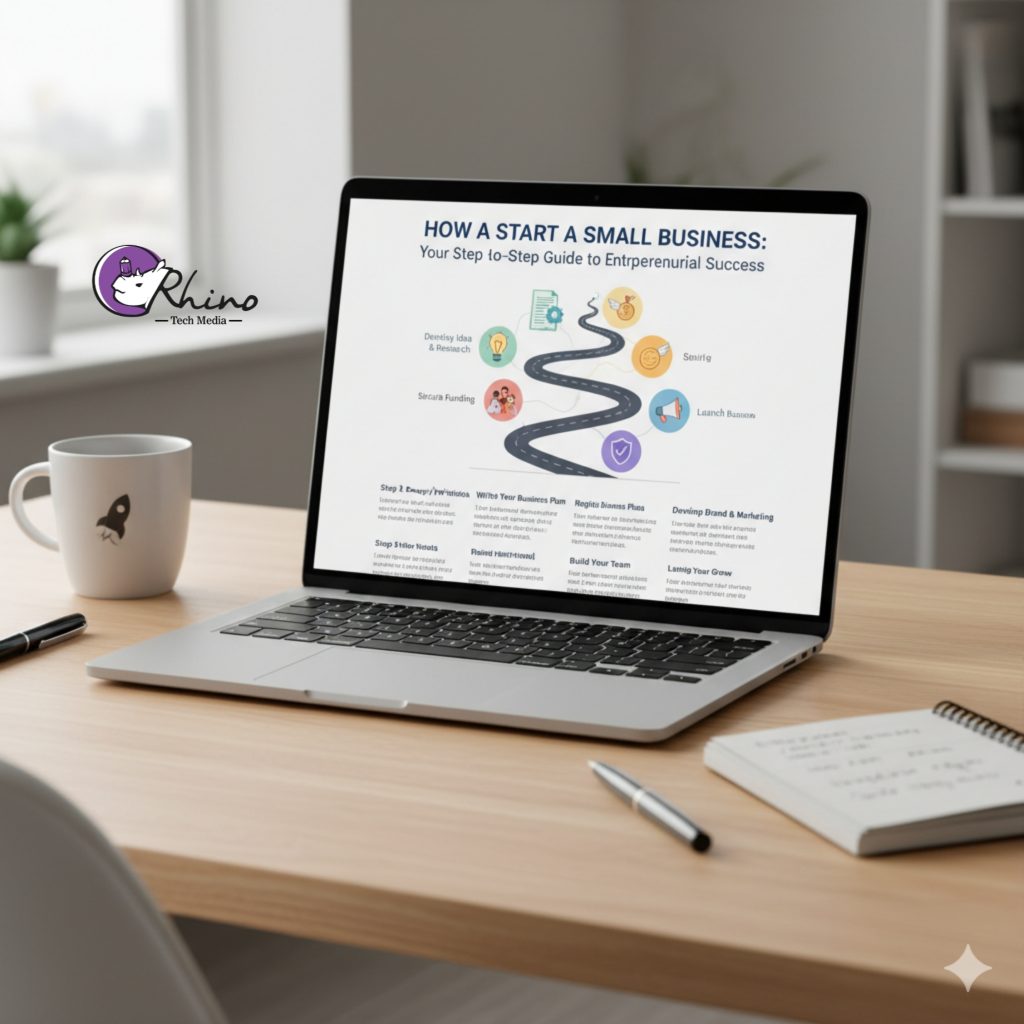Steps to Start a Small Business
Starting a small business is one of the most rewarding yet challenging ventures an individual can undertake. It requires a balance of creativity, planning, discipline, and adaptability. While each business journey is unique, the process generally follows several key steps that transform an idea into a sustainable enterprise.
1. Identifying a Business Idea
The first step in starting a small business is identifying a viable business idea. This involves exploring one’s interests, skills, and market opportunities. A good business idea often arises from solving a problem or fulfilling a gap in the market. Entrepreneurs should consider questions such as: What products or services do people need but struggle to find? or How can I improve existing solutions? Conducting a preliminary analysis of demand, target customers, and potential competitors helps refine the idea into something practical and profitable.
2. Conducting Market Research
Once an idea has been established, market research becomes essential. This process involves collecting and analyzing data about the target market, customer preferences, competitors, and industry trends. Market research provides insights into pricing strategies, marketing channels, and potential challenges. It also helps to validate whether the business idea is truly feasible. Methods such as surveys, interviews, focus groups, and online research can be employed to gather valuable information.
3. Developing a Business Plan
A well-structured business plan acts as the blueprint for success. It outlines the business objectives, mission, products or services, target market, operational plan, marketing strategy, and financial projections. Investors, lenders, and even potential partners often require a detailed business plan before offering support. For entrepreneurs, it serves as a guide to stay focused and measure progress.
4. Securing Financing
Every business requires capital to get started. Financing options vary depending on the size and nature of the business. Entrepreneurs may use personal savings, apply for bank loans, seek government grants, or attract investors. In recent years, crowdfunding and angel investment have become popular alternatives. Regardless of the source, it is important to estimate start-up costs accurately and manage funds responsibly to ensure financial stability in the early stages.
5. Choosing a Legal Structure and Registering the Business
Selecting the right legal structure—such as a sole proprietorship, partnership, limited liability company (LLC), or corporation—has long-term implications for taxes, liability, and management. Once chosen, the business must be registered with the appropriate government agencies. Entrepreneurs may also need to obtain licenses or permits depending on their industry. Proper registration ensures that the business operates legally and can build trust with customers and partners.
6. Setting Up Operations
After registration, attention shifts to setting up the physical or digital workspace. This may include securing a business location, purchasing equipment, setting up technology systems, and hiring employees. Creating efficient operational systems from the start helps prevent future disorganization. For online businesses, establishing a professional website and e-commerce platform is equally important.
7. Developing a Marketing Strategy
Marketing is the bridge between the business and its customers. A solid marketing strategy identifies the target audience and determines how best to reach them through branding, social media, advertising, and content creation. Small businesses often benefit from cost-effective digital marketing tactics such as social media campaigns, email newsletters, and search engine optimization (SEO). Consistency and authenticity are key to building a loyal customer base.
8. Launching and Managing Growth
Once all preparations are complete, it’s time to officially launch the business. The launch should generate excitement and attract initial customers. However, success does not end there. Entrepreneurs must continuously monitor performance, gather feedback, and make improvements. Managing growth responsibly involves reinvesting profits, expanding operations strategically, and maintaining quality and customer satisfaction.
Conclusion
Starting a small business is not merely about having a great idea—it’s about careful planning, persistence, and adaptability. From identifying a market need to maintaining sustainable growth, each step builds the foundation for long-term success. Entrepreneurs who follow these steps with dedication and a willingness to learn will be well-equipped to navigate the challenges of business ownership and turn their vision into reality.

